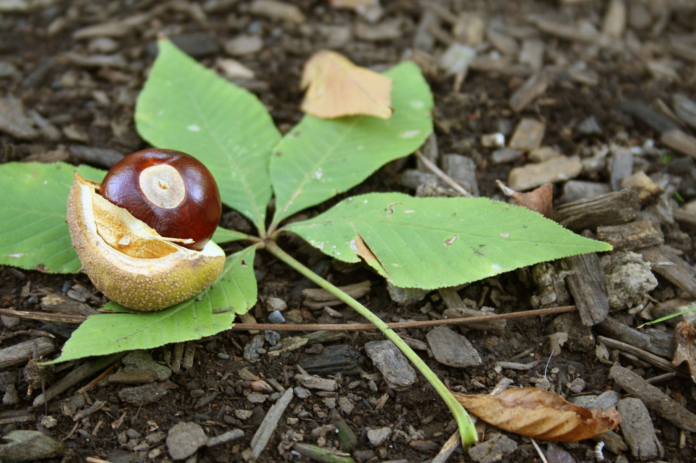Buckeye, Ohio
Aesculus glabra , Deciduous
The buckeye tree is named for its round, shiny-brown nuts born
in a spiny capsule that somewhat resembles a “buck's eye”.

Where To Grow

Size at Maturity
| Tree Height | Tree Spread |
| 25-40' | 20-30' |
Tree Characteristics
Ohio buckeye has palmately compound (fan-shaped) leaves (typically 5 leaflets) that can turn a nice orange-red in the fall, though they are often discarded early in dry years. Flowers are borne in late spring on noticeable green-yellow panicles about 5-7” long. Ohio buckeye is one of the first trees to leaf out in spring. Flowering: March-May, after the leaves appear; fruiting: September-October.
Wildlife Benefits
Despite the poisonous properties to humans and livestock (more below), squirrels are known to eat the raw seeds.
Additional Considerations
All parts of the plant (leaves, bark, fruit) are highly toxic if ingested. Symptoms are muscle weakness and paralysis, dilated pupils, vomiting, diarrhea, depression, paralysis, and stupor. Many landowners have eradicated it to prevent livestock poisoning.
Additional species one could try planting are the red or yellow buckeyes.
Interesting Facts
Native Americans ground buckeye to use as a powder on ponds to stun fish.
References
- Tips for tree planting
- NRCS Plant Guide
- Developed by Justin Evertson, Kyle Martens, and Denise Wally